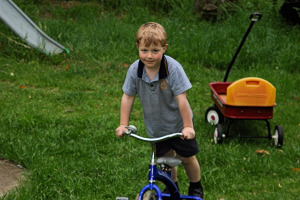Autism. What's the role of routine when remediating autism?
One of the key things that lots of autism educators will tell teachers to do is to keep a strong routine going in the classroom for their autistic students. Keeping things the same so that children on the spectrum won't get upset is acknowledged to be pretty important.
While I agree that it's true, I think it's only true to an extent, and I think it can be too easy to rely on it as a 'prop' to keep ASD students quiet and easier to manage.
Typically, ASD people tend to seek out routines because they are predictable and safe. Changes and challenges are hard to deal with, so people on the spectrum avoid them if at all possible.
The problem is that ASD students need to be challenged by changes if their autism is going to be remediated. In other words, if they are going to learn to think flexibly, they need to be given opportunities to think flexibly.
So while a routine may be necessary to keep anxiety levels down, it's good to make small changes within the routine wherever possible. Bigger changes can come as flexible thinking grows.
If a change is too big, Bright Eyes lets me know by using fight or flight. He either gets aggro and upset, or he avoids and runs away. Where I have to think flexibly myself is in analysing the changes I've tried to make. Too big? Too fast? Too much? Where can I break this down a bit more?
When helping an ASD child learn to think flexibly, it's so important to go small, slowly and quietly. But it's also important to do it, and not just leave them to their routine.

